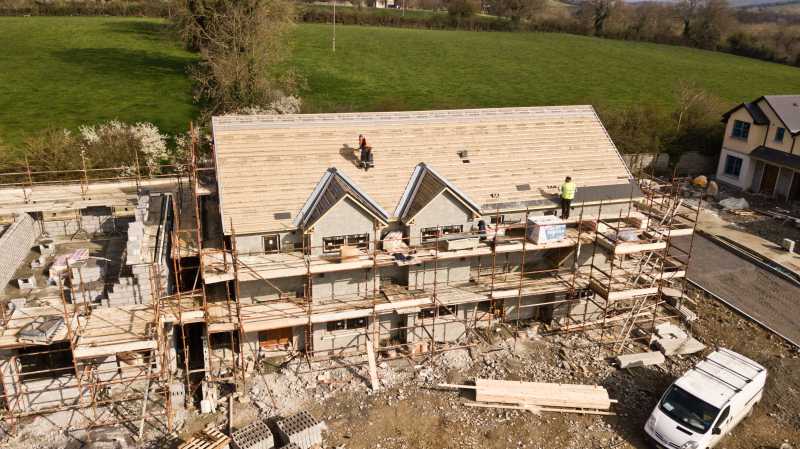Roofing underlayment is an essential component of any roofing system. It serves as a barrier against water and wind, and it also provides additional insulation. But with so many options available, how do you choose the right one for your home or business? In this guide, we’ll walk you through the process step by step.
What is Roofing Underlayment?
Roofing underlayment is a layer of material that is installed directly onto your roof deck. It serves as a secondary barrier against the elements, protecting your home or business from water damage and helping to keep it insulated. There are three main types of underlayment: asphalt-saturated felt, synthetic, and rubberized asphalt. Each has its own advantages and disadvantages, which we’ll explore in the next section.
Types of Roofing Underlayment
Asphalt-Saturated Felt
This is the traditional type of roofing underlayment. It’s made from organic or fiberglass substrate, which is then saturated with asphalt to make it water-resistant. While it’s not as durable as synthetic underlayment, it’s a cost-effective option that’s suitable for most residential applications.
Synthetic Underlayment
Synthetic underlayment is a newer product that’s made from polypropylene or polyester. It’s lighter and stronger than asphalt-saturated felt, and it’s also more resistant to tearing and water damage. However, it’s also more expensive.
Rubberized Asphalt
Rubberized asphalt underlayment is the most durable and water-resistant option. It’s also self-adhering, which means it sticks directly to the roof deck for maximum protection. However, it’s also the most expensive type of underlayment.
How to Choose the Right Underlayment
When choosing underlayment, you’ll need to consider several factors. These include the type of roofing material you’re using, the slope of your roof, and the climate in your area. For example, if you live in a rainy climate, you might want to choose a more water-resistant underlayment like rubberized asphalt. If you’re on a tight budget, asphalt-saturated felt might be the best option.
Installation Tips
Proper installation is crucial for the performance of your underlayment. It’s always best to hire a professional roofer to do the job, as they’ll have the necessary skills and experience. However, if you’re a DIY enthusiast, there are a few tips you should keep in mind. These include making sure the roof deck is clean and dry before installation, and overlapping the underlayment correctly to prevent water from seeping through.
Conclusion
Choosing the right roofing underlayment is a crucial step in ensuring the longevity and durability of your roof. By considering the type of roofing material, the slope of your roof, and the climate in your area, you can make an informed decision that will protect your home or business for years to come.
FAQs
What is the purpose of roofing underlayment?
Roofing underlayment serves as a secondary barrier against the elements, protecting your home or business from water damage and helping to keep it insulated.
What are the different types of roofing underlayment?
The three main types of roofing underlayment are asphalt-saturated felt, synthetic, and rubberized asphalt.
How do I choose the right underlayment for my roof?
When choosing underlayment, consider the type of roofing material you’re using, the slope of your roof, and the climate in your area.
Can I install roofing underlayment myself?
While it’s possible to install roofing underlayment yourself, it’s always best to hire a professional roofer to ensure the job is done correctly.
How long does roofing underlayment last?
The lifespan of roofing underlayment can vary depending on the type of underlayment and the conditions it’s exposed to. However, it generally lasts as long as the roofing material it’s installed under.

